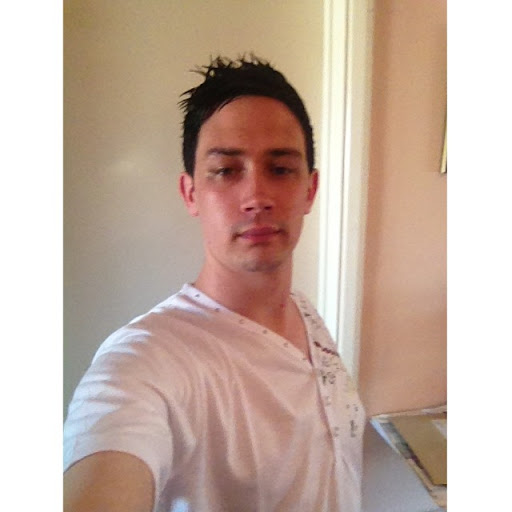Richard Scot Sinclair
age ~73
from Stockton, CA
- Also known as:
-
- Richard S Sinclair
- Scot S Sinclair
- Scott Scot Sinclair
- Rick S Sinclair
- Dick S Sinclair
- Richard S Stclair
- Richar Sinclair
- Scottscot Sinclair
- Phone and address:
- 7560 Lighthouse Dr, Stockton, CA 95219
Richard Sinclair Phones & Addresses
- 7560 Lighthouse Dr, Stockton, CA 95219
- Columbus, OH
- Foster City, CA
Name / Title
Company / Classification
Phones & Addresses
Incorporator
BALSOW, INC
Lawyers & Attorneys

Richard Sinclair - Lawyer
view sourceISLN:
903687018
Admitted:
1978
University:
UCLA SOL, Los Angeles, CA; Univ of California at Los Angeles, CA

Richard Sinclair - Lawyer
view sourceISLN:
921710385
University:
Concordia University, B.A.; Syracuse University, M.B.A.
Law School:
University of Ottawa, LL.B.; University of Ottawa, LL.L.

Richard C. Sinclair - Lawyer
view sourceAdmitted:
1976, California
University:
University of California, B.A.
McGeorge School of Law, J.D.
McGeorge School of Law, J.D.
Biography:
Not available
Us Patents
-
Degradation Control Of Environmentally Degradable Disposable Materials
view source -
US Patent:6740731, May 25, 2004
-
Filed:Feb 12, 2001
-
Appl. No.:09/782183
-
Inventors:Donald M. Bigg - Columbus OH
Richard G. Sinclair - Columbus OH
Edward S. Lipinsky - Worthington OH
John H. Litchfield - Worthington OH
Billy R. Allen - Greenwood IN -
Assignee:Cargill Dow Polymers LLC - Midland MI
-
International Classification:C08G 6308
-
US Classification:528354, 528355, 528357, 528359, 528361, 528363, 528480, 528486, 525411, 525413, 525415, 524306, 524310, 524315, 524317, 524320, 523124, 523125, 523500, 428480, 428364, 4284111, 521 98, 521121, 521100, 264212
-
Abstract:The present invention is directed to a method for reducing waste accumulation by using an environmentally degradable disposable material. The disposable material, which includes a hydroxycarboxylic acid-containing polymer, degrades hydrolytically during operative and disposal stages in a controlled manner such that the disposal degradation rate of the material is accelerated relative to the operative degradation rate of the material.
-
Biodegradable Replacement Of Crystal Polystyrene
view source -
US Patent:54243467, Jun 13, 1995
-
Filed:May 9, 1994
-
Appl. No.:8/240085
-
Inventors:Richard G. Sinclair - Columbus OH
-
Assignee:Ecopol, LLC - Golden CO
-
International Classification:C08L 6704
-
US Classification:524108
-
Abstract:The biodegradable polymer comprises polymerized lactic acid units of the structure: ##STR1## where n is an integer between 450 and 10,000 and the alpha carbon is a mixture of L- and D-configurations with a preponderance of either D- or L-units, wherein the polymer is suitable for replacement of polystyrene; the biodegradable composition also comprises blends of a physical mixture of polymerized lactic acid units of the formula I, where n is an integer between 450 and 10,000 and the alpha carbon is a mixture of L- and D-configurations with a preponderance of either D- or L-units, and a homopolymer of poly(D-lactic acid) or poly(L-lactic acid), and plasticizers that provide unique properties when intimately dispersed.
-
Use Of Degradable Ball Sealers To Seal Casing Perforations In Well Treatment Fluid Diversion
view source -
US Patent:47169648, Jan 5, 1988
-
Filed:Dec 10, 1986
-
Appl. No.:6/940193
-
Inventors:Steven R. Erbstoesser - Missouri City TX
Claude E. Cooke - Houston TX
Richard G. Sinclair - Columbus OH
Michael M. Epstein - Columbus OH -
Assignee:Exxon Production Research Company - Houston TX
-
International Classification:E21B 3310
E21B 4325
E21B 4326 -
US Classification:166284
-
Abstract:Plugging perforations in casing in a wellbore penetrating a subterranean formation using degradale ball sealers. The ball sealer used is composed of a polyester polymer which is substantially insoluble in the wellbore fluid. The polymer degrades in the presence of water at an elevated temperature to form small molecules which are soluble in a fluid in the subterranean formation. After the polymer degrades, the flow through the perforation returns to substantially its initial value.
-
Biodegradable Stent
view source -
US Patent:50856294, Feb 4, 1992
-
Filed:Sep 27, 1989
-
Appl. No.:7/414651
-
Inventors:Jay Goldberg - Northbrook IL
Richard Sinclair - Columbus OH -
Assignee:Medical Engineering Corporation - DE
-
International Classification:A61M 500
A61F 204 -
US Classification:604 8
-
Abstract:A biodegradable, biocompatible, resorbable infusion stent comprising a terpolymer of: (a) L(-)lactide, (b) glycolide, and (c) epsilon-caprolactone. This invention includes a method for treating ureteral obstructions or impairments by utilizing a biodegradable, biocompatible, resorbable infusion stent, and a method for controlling the speed of resorption of the stent.
-
Composition For Reducing The Permeability Of Subterranean Formations
view source -
US Patent:45266956, Jul 2, 1985
-
Filed:Feb 4, 1983
-
Appl. No.:6/464084
-
Inventors:Steven R. Erbstoesser - Missouri City TX
Claude E. Cooke - Houston TX
Richard G. Sinclair - Columbus OH
Michael M. Epstein - Columbus OH -
Assignee:Exxon Production Research Co. - Houston TX
-
International Classification:E21B 33138
-
US Classification:252 855R
-
Abstract:The present invention relates generally to the composition and method for reducing the permeability of subterranean formations penetrated by a wellbore. The composition of the present invention comprises a wellbore fluid having dispersed therein a fluid loss control agent comprising a polyester polymer which is substantially insoluble in the wellbore fluid. The polymer degrades in the presence of water at an elevated temperature to form small molecules which are soluble in a fluid in the subterranean formation. The method of the present invention comprises reducing the permeability of subterranean formations penetrated by a wellbore by placing the composition of the present invention down the wellbore.
-
End Use Applications Of Biodegradable Polymers
view source -
US Patent:54441137, Aug 22, 1995
-
Filed:Sep 29, 1993
-
Appl. No.:8/128520
-
Inventors:Richard G. Sinclair - Columbus OH
Edward S. Lipinsky - Worthington OH
James D. Browning - Columbus OH
Donald Bigg - Columbus OH
Thomas A. Rogers - Golden CO -
Assignee:Ecopol, LLC - Golden CO
-
International Classification:C08K 510
-
US Classification:524306
-
Abstract:Disclosed are products made of degradable materials which include a hydrolytically degradable polymer. The degradable materials can be internally or externally modified. The internally modified polymer composition has polymers modified by the use of comonomers having a relatively high molecular weight. The externally modified polymer composition includes a modifier, wherein the modifier is compatible with the polymer and the modifier is nontoxic, nonvolatile and nonfugitive. The various degradable materials include films, fibers, extruded and molded products, laminates, foams, powders, nonwovens, adhesives and coatings. The disclosed materials are particularly useful for the production of a variety of products in high volumes which are suitable for recycling after use or which are discarded into the environment in large volumes.
-
Catalytic Production Of Lactide Directly From Lactic Acid
view source -
US Patent:53328396, Jul 26, 1994
-
Filed:Sep 18, 1990
-
Appl. No.:7/584466
-
Inventors:Herman P. Benecke - Columbus OH
Richard A. Markle - Columbus OH
Richard G. Sinclair - Columbus OH -
Assignee:BioPak Technology, Ltd. - Golden CO
-
International Classification:C07D31912
-
US Classification:549274
-
Abstract:The present invention is directed to a method for making lactide from aqueous lactic acid. The invention method comprises converting feed aqueous lactic acid to its vapor phase. The feed vapors then are passed through a reactor maintained at elevated temperature and in which optionally is disposed an alumina catalyst. Withdrawn from the reactor is product lactide, water, and unreacted lactic acid which are subjected to separation for recovery of the lactide product. The separated unreacted lactic acid is eligible for readmission to the process for making additional lactide. This cyclic process embodiment of the present invention comprises the steps of passing make-up aqueous lactic acid feed into a vaporization zone along with unreacted aqueous lactic acid filtrate from another step of the process and therein forming aqueous lactic acid feed vapors. The thus-generated vapors that are passed through a vapor phase reaction zone held at elevated temperature for forming lactide therein. Lactide as a solid is separated from unreacted aqueous lactic acid filtrate; and the filtrate is passed into the vaporization zone in the initial step of the process.
-
Method For Producing Metal Castings
view source -
US Patent:46339299, Jan 6, 1987
-
Filed:Oct 16, 1985
-
Appl. No.:6/787859
-
Inventors:Joseph G. Santangelo - Allentown PA
James J. Weber - Allentown PA
Richard G. Sinclair - Columbus OH
Richard D. Tenaglia - Columbus OH -
Assignee:Air Products and Chemicals, Inc. - Allentown PA
-
International Classification:B22C 904
B22C 702 -
US Classification:164 34
-
Abstract:Metal castings having reduced residual carbon ash and surface flaws are produced by an evaporative pattern casting process, in which an organic foam pattern is vaporized upon contact with a molten metal leaving a metal replica of the pattern. The organic foam used in this process comprises a polymer formed by polymerizing CO. sub. 2 with one or more oxirane compounds.
Youtube
Plaxo

Richard Sinclair
view source
Richard Sinclair
view source
Richard SINCLAIR
view source
Richard Sinclair
view sourceRichard Sinclair at Warehouse Studio

Richard Sinclair
view source
Richard Odean Sinclair
view source
Richard Sinclair
view source
Richard Sinclair Sr
view source
Richard Sinclair
view source
Richard Sinclair
view source
Charles Richard Sinclair
view source
Richard Sinclair
view sourceGoogleplus

Richard Sinclair
Work:
Non-profit Hospital
Self
Self
Education:
Self

Richard Sinclair
Work:
Mark 5 Electronics

Richard Sinclair
About:
My name is Richard Sinclair and I am working as manager an Internet Marketing Blog. The blog provides tips and updates on automotive, investment, marketing,online business, small business and much mor...
Tagline:
Internet Marketing Blog is a UK business blog that offers information on business, latest news & updates, business strategies, free marketing tips and ideas and also share your views with others.

Richard Sinclair

Richard Sinclair

Richard Sinclair

Richard Sinclair

Richard Sinclair
Myspace

Richard Sinclair
view source
richard sinclair
view sourceClassmates

Richard Sinclair
view sourceSchools:
Nichols Elementary School Detroit MI 2002-2006
Community:
Janet Chapman, Michael Eden, Darin Kennedy, Ruth Meshriy

Richard Sinclair
view sourceSchools:
North East Village Elmentary School Philadelphia PA 1953-1957
Community:
Edward Frederick, Charles O'donnell, Donna Vincent, Judith Rilling

Richard Sinclair
view sourceSchools:
Graham Park Middle School Triangle VA 1992-1994

Richard Sinclair
view sourceSchools:
Balyki High School Bath IL 1959-1963
Community:
Brian Ward, Christine Clark, Charles Hughes, Tracey Mibbs, Tony Cowin, Kelli Stillman

Richard Sinclair
view sourceSchools:
Athens High School Athens OH 1988-1992
Community:
Ian James, Susan Nouse, Oscar Rodriguez, Debra Lamp, Rick Sheets

Richard Sinclair
view sourceSchools:
Harding High School Oklahoma City OK 1954-1958
Community:
Sheri Livingston, David Carey, Richard Smith, Patricia Adams, Susan Arnold, Sally Wilkes, Judi Leftwich, Ron Turner, Larry Luman, Sharon Lamb, Barby Burnett

Richard Sinclair
view sourceSchools:
Browning High School Browning MT 1973-1977
Community:
Debra Upham, Rick Na, Carl Trombley

Richard Sinclair
view sourceSchools:
Southside High School Buffalo NY 1979-1983
Community:
Donna Richardson, Ed Keighron, Sharon Danthony, Victoria Burgos
Flickr
Get Report for Richard Scot Sinclair from Stockton, CA, age ~73











